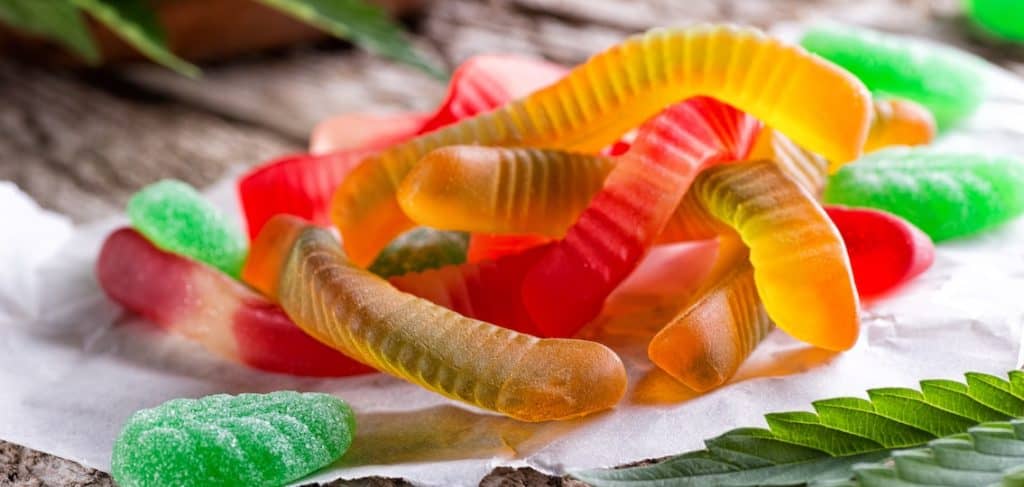Edibles With Cannabis Content Are Poisonous, Especially To Children And Youngsters
Nikki Attkisson | Last Updated : May 29, 2021As per a recent analysis, new marijuana products such as edibles concentrates, and vapes are fueling a spike in marijuana-related calls to U.S. poison control centers.
Edibles With Cannabis Content Are Poisonous, Especially To Children And Youngsters

According to the study, there were over 11,100 calls connected to marijuana usage in 2019, an increase from over 8,200 in 2017.
More and more of these calls are about manufactured items containing concentrated levels of THC, CBD, and other cannabis-related compounds.
The lead researcher Julia Dilley, who is an epidemiologist from the Oregon Public Health Division, Portland, noticed a generalized rise in calls throughout the country.
However, when she delved further, she discovered that manufactured items are driving this surge, Dilley added. Requests for flower cannabis exposure are decreasing.
In 2017, marijuana plant exposures accounted for the vast majority of calls to centers, with 7,146 involving marijuana plants and only 1,094 involving manufactured items. However, by 2019, the number of calls connected to manufactured goods had risen to 5,503, while exposure to marijuana had resulted in 5,606 calls.
Manufactured goods often include high levels of THC, the intoxicating compound found in marijuana plants, and these figures indicate that they are more likely to trigger an adverse reaction.
As per Dilley, more than 81 percent of calls relating to manufactured items were from persons using such goods only, rather than in conjunction with alcohol or another substance.
Dilley claims that it just took cannabis product exposure for the situation to get bad enough that assistance was required.
On the other hand, marijuana alone accounted for only 38% of all pot plant usage calls. They were more likely to use it with alcohol or another drug in the combination, according to Dilley.
Edibles account for the majority of poison control calls relating to manufactured items, accounting for slightly more than half of all exposures.
And food product exposures are more likely to include children than other sorts of items, which is obviously a worry, Dilley mentioned.
According to the researchers, there were 2,505 occurrences involving manufactured goods and children under the age of 10, compared to 1,490 documented plant-based exposures in that age range over a three-year period of poison control Centre calls.
Dilley, on the other hand, stressed that these exposures resulted in mild medical concerns more than 60% of the time. People usually call in because they aren’t feeling well.
As per Dilley, some folks may be going through something frightening. Maybe they’re dizzy and don’t know whether that’s normal, so they phone, but they don’t actually require medical attention.
Researchers discovered that the incidence of poison control calls was greater in states where recreational marijuana usage is authorized.
In 2019, the rate of manufactured product calls in legalization states was 2.5 per 100,000 persons, compared to 1.3 per 100,000 in states where recreational marijuana is still illegal.
According to Linda Richter, who is the vice president of preventive research and analysis at the Partnership to End Addiction, this shows that states that have legalized marijuana are not doing enough to safeguard children from its risks.
Edibles are frequently mistaken for popular varieties of candy and other sweets and are frequently developed and packed in a way that expressly appeals to young people, such as gummy bears and little chocolate bars with names and branding that mirror big brands, according to Richter. Vaped marijuana is odorless and incredibly covert, and so poses all of the same hazards to youngsters as the previous nicotine vaping pandemic.
Richter also advised parents not to leave marijuana items lying about in plain sight where youngsters may easily acquire them.
As with any addictive substance, if these items are present in the household, adults should make sure that they are hidden from the sight and reach of youngsters, as per Richter. If adults do use them in the company of children, they must be very cautious to explain that they are harmful to children to touch or consume, and they must avoid expressing in any manner that the items are innocuous, pleasant, or required to relax and enjoy oneself.
With over 15 years as a practicing journalist, Nikki Attkisson found herself at Powdersville Post now after working at several other publications. She is an award-winning journalist with an entrepreneurial spirit and worked as a journalist covering technology, innovation, environmental issues, politics, health etc. Nikki Attkisson has also worked on product development, content strategy, and editorial management for numerous media companies. She began her career at local news stations and worked as a reporter in national newspapers.